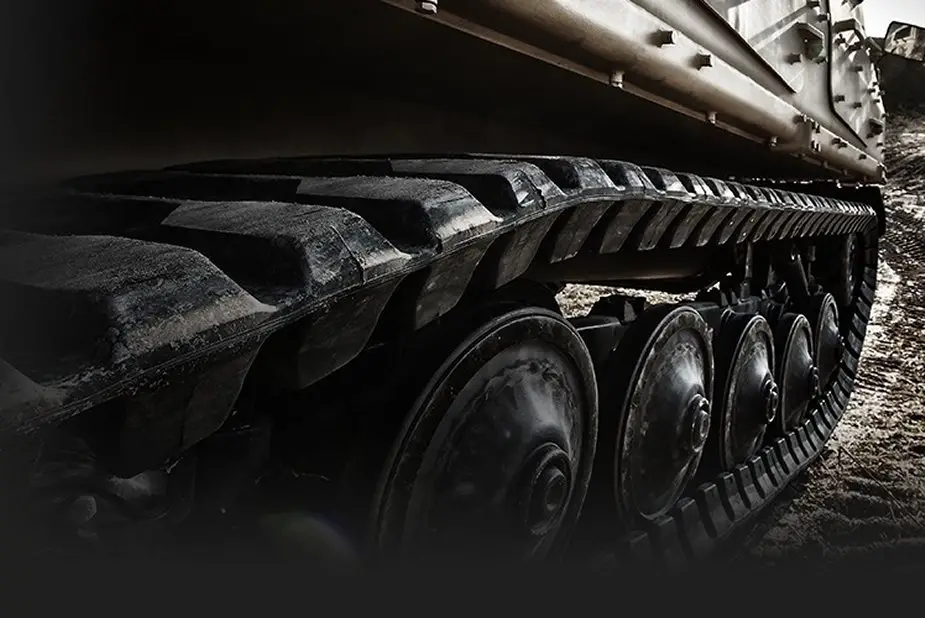Soucy Defense’s first attendance at Asia’s largest defence show and one of the top five in the world is crucial to Soucy showcasing its products, not only, throughout the Asia Pacific region, but also globally.

(Credit: Soucy Defense)
Soucy Defense recently celebrated its 50th anniversary and has specialised in Defense Composite Rubber Track for the past 25 years. Its operationally proven CRT system, which replaces the traditional steel track, has a plethora of benefits which include: reduced noise and vibration, weight saving, improved maintainability, durability, fuel efficiency, and survivability.
The human response to vibration can be both mechanical and psychological can limit the amount of time a soldier can safely spend on the vehicle. Rattling along in an Armoured Platform on steel tracks can shake the soldier to the point of exhaustion, according to Kevin Sloan (retired British Armoured Officer). Mechanical damage to human tissue occurs from increased vibration which causes injuries to the blood vessels, nerves, bones, joints and muscles. Psychological symptoms involve headache, vertigo, nausea and stress.
The vehicle, as a system, also suffers. Capacitors, resistors, transistors and other component parts are sensitive to vibration. Dampening the impact transmitted to the vehicle chassis and therefore reducing internal components from vibration, can improve availability and mission effectiveness. Manufacturers are just beginning to address the important aspect of reducing vibrations from the ground – up. Vibrations from the steel track are directly transmitted to sensitive circuitry and cause serious aberrations that significantly reduce the life of the components. This creates the hardest type of system failure to debug; an intermittent failure – not to mention vibration induced inaccuracies with the weapon munitions.
The track being slightly wider has increased traction which improves mobility and reduces engine workload, this can cut fuel consumption by as much as 25%, says ATDU, the UK’s Armoured Trials and Development Unit. Rubber tracks are more reliable, too. Armoured vehicles are infamous for breaking down. On average, the pads of a steel track are replaced after just 600 km of use – Soucy’s tracks last more than 5,000 km. Composite Rubber tracks weigh half as much as their steel tracks. They are also less damaging to the roads and infrastructure, through this is not such a consideration in war, with in-country training exercises, peacekeeping operations, and fragile littoral areas, CRT is much more palatable.
Soucy Defense is a global leader in Composite Rubber Track, offering track systems for vehicles with a GVW up to 47mT. This revolution in track design and capability has led the armed forces of Canada, Norway, the Netherlands, Sweden, USA, UK, Brazil, Germany, Spain, Turkey, Singapore, Malaysia, the Philippines, Thailand, South Korea and Japan to either replace Steel Track for Rubber or invest on testing. Canada, Norway and the UK have used CRT operationally in Iraq and Afghanistan.














